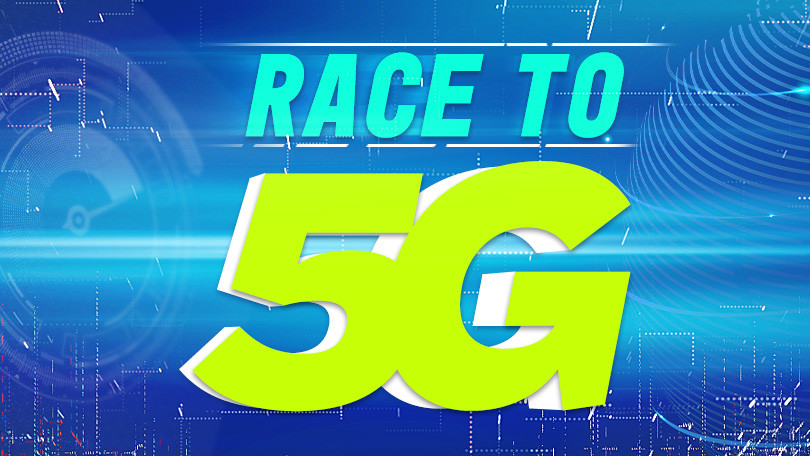5G Internet is expected to be at least ten to twenty times faster than the speeds we are used to till now. With the soft launch of powerful 5th generation –5G– the vision of blazing fast cellular internet technology is close to becoming a commercial reality. Today’s pace of business advancement is sky-high and quite enough to overwhelm every company that yearns for it. Let us break down the whole 5G hype!
What is 5G?
Fifth-generation of digital connectivity is definitely here but not available everywhere, yet! Humanity celebrates a new era of streaming ultra-HD videos on our devices and lightning-fast broadband speeds with 5G technology, which are exponentially better than the existing connections.
These networks are meant to support technologies like artificial intelligence and the Internet of Things. This will catalyze major technological breakthroughs in the fields stated earlier. Having minimum upload rates as high as 1 Gbps will be a norm after 5G’s global launch.
Despite innovations underway and a few test launches past, it is projected that by 2020 the 5G infrastructure will surely see the light of day around the globe.
The Commercial 5G Rollout
Following promising 5G trials on AI-powered auto-driving cars, VR gaming, and Internet of things technology, South Korea’s commercial 5G rollout just made it the first nation to push commercial 5G networks nationwide.
However, earlier in April, Verizon released its trial sites in certain parts of California as well. Word in the business world says that Spectrum is planning to introduce 5G before anyone else, in Canada. However, this is just the beginning of a corporate race/world cup run that could last for a couple of years to come. Click here to see the top providers in your area, already warming up to win this race.
Is 5G really a ‘Game changer’
Governments and businesses are promoting 5G for wireless connectivity as a speed boost. However, what is so new about 5G? Is it really what it has been shown to be? South Korea presented one of the most fascinating demonstrations of this innovation at last year’s Winter Olympics.
To keep wild boars away from the Games, the Koreans used IoT powered tools as strange as those that make sounds similar to a tiger’s roar. KT, a Korean regional carrier, used 5G technology to stream live videos during bus rides for the audiences.
Likewise, in the future, the applications of this technology will be more widespread. We can go as far as we want as the only limit here is our talent.
A spokesperson of Korean technology recently stated in a convention that 5G technology demands four-times as many antennas as the existing 4G technology. Since the radio waves used in this technology have a limited range. Low-indoor-signal-penetration, too, was one of the problems reported in these experiments.
What experts have to say
Prof. Webb, the popular author of “The 5G Myth,” believes that 5G will be able to operate on a spectrum of different wavelengths–lower frequencies called’ millimeter waves’ that would reach speeds as high as 10 Gbps. These cover smaller areas, however, and can be easily blocked by concrete structures or perhaps humans in their way.
University of Surrey’s Prof. Rahim stated that the UK had a reasonable chance to roll out this innovation before others, among the top 5 nations, but at the beginning, it will be very regional.
Network operators – how far have they reached
In terms of investing money in researching 5G technology, China has outperformed US and have already registered for launch dates.
It is difficult to commercially achieve the lightning-fast speeds 5G promises that can range up to 28 GHz as of yet. However, large network operators such as AT&T, T-Mobile, and Spectrum are entering the race by investing in some radio frequencies and infrastructure to pursue small-scale 5G escalations.
Japan, on the other hand, actively keeps up with the competition. Many tourists in a baseball stadium actually watched 4K live video streaming on their 5G enabled tablets in March last year, that were capable of receiving wave signals in millimeters.
The B-side of this cassette
OpenSignal, a mobile analytics company’s representative, Brendan, brought something serious to the world’s attention that far too many people are still not on 4G networks. As per that, it is far more relevant to provide an under-served segment of the population with 4G first, before jumping into the race to next-generation 5G technology. The masses can watch HD videos on a 4G network hence; maximizing 4G coverage is better than adopting a system that needs further investment and more sophisticated infrastructure.
So, what’s all that hype about? Okay, the global race is there and we all know that nobody wants to arrive last, considering the fact that getting the last place can threaten their entire existence. What do you have to say about this hiatus? Let me know in the comments below!
Author Bio
Nida Shahid
Digital Marketer at Local Cable Deals
Business graduate, writer, digital marketer, traveler, Interior design enthusiast, and a proud dog parent. She shares her expertise and writes for businesses to improve their rankings on Google. Probably one of the most amazing things about her is her ability to stay relevant. Her work has been posted on multiple blogs and e-zines across the web. Find her on twitter.







